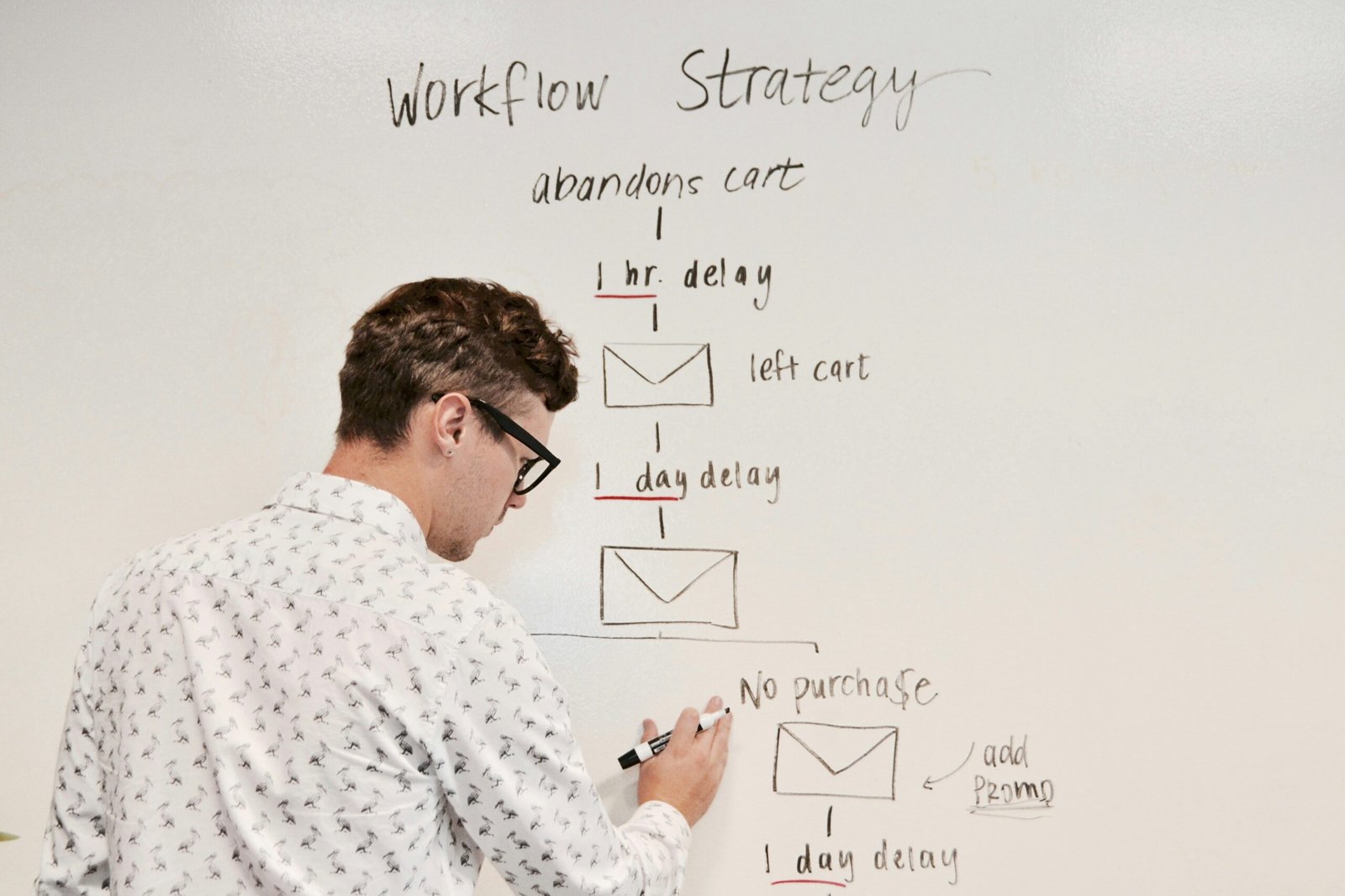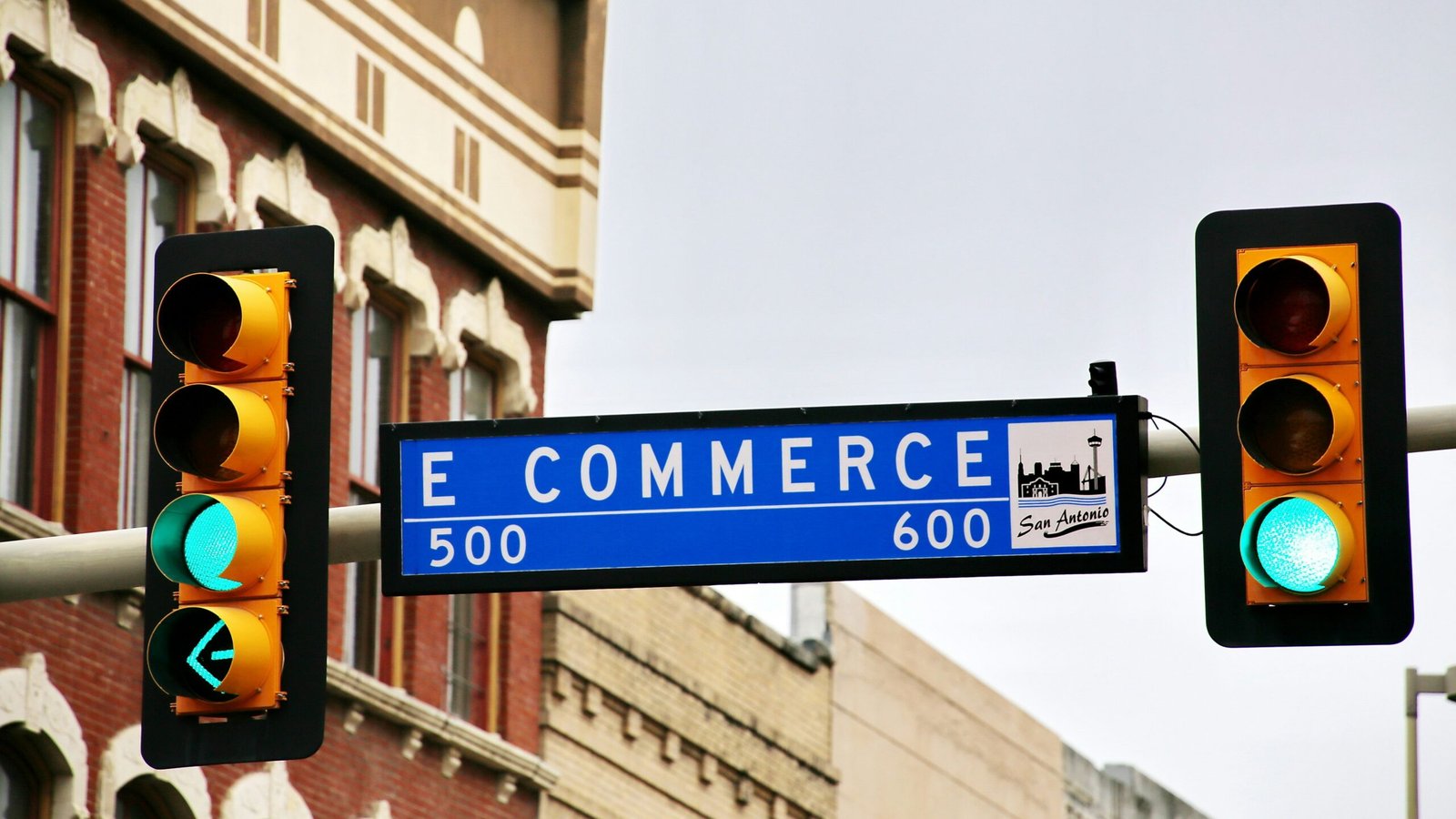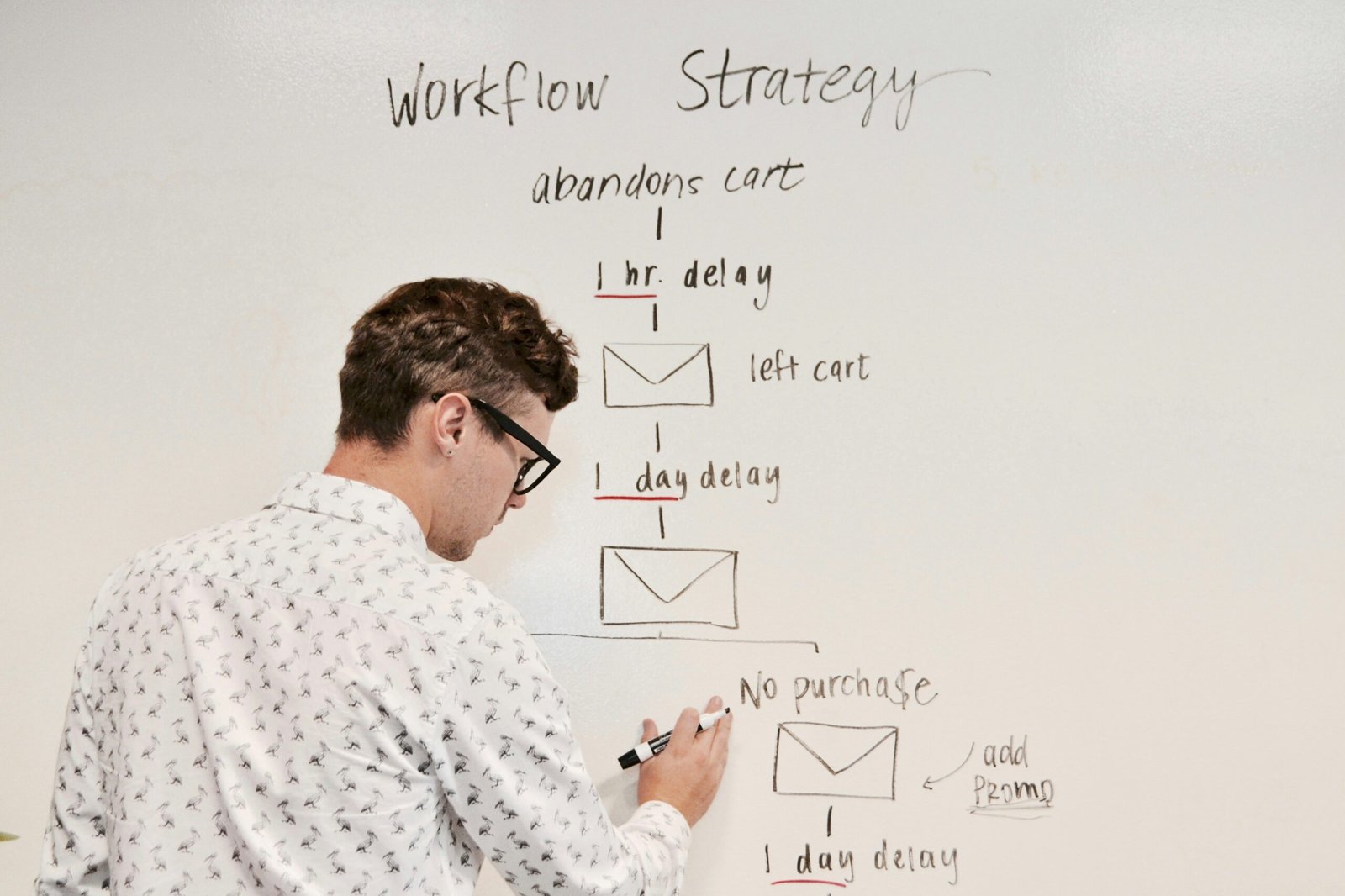The Power of E-Newsletters in B2B E-Commerce Marketing
E-Newsletters: The Key to Successful B2B E-Commerce Marketing
In today’s digital age, where businesses are constantly striving to stay ahead of the competition, e-newsletters have emerged as one of the most effective marketing tools for B2B e-commerce businesses. With the ability to reach a wide audience, build brand awareness, and drive customer engagement, e-newsletters have become an essential component of any successful marketing strategy. In this blog post, we will explore the reasons why e-newsletters are so effective for B2B e-commerce businesses, provide industry insights and examples, and offer actionable tips for creating compelling e-newsletters. Let’s dive in!
E-newsletters have revolutionized the way B2B e-commerce businesses communicate with their customers. Unlike traditional marketing channels such as print advertisements or direct mail, e-newsletters allow businesses to deliver personalized and targeted content directly to their subscribers’ inboxes. This level of customization not only enhances the customer experience but also increases the likelihood of conversion.
One of the key advantages of e-newsletters is their ability to reach a wide audience. With the rise of smartphones and the increasing accessibility of the internet, more and more people are checking their emails on a daily basis. This presents a unique opportunity for B2B e-commerce businesses to connect with their target audience on a regular basis and stay top of mind. By consistently delivering valuable content, businesses can establish themselves as thought leaders in their industry and build trust with their subscribers.
Furthermore, e-newsletters are an excellent tool for building brand awareness. By incorporating consistent branding elements such as logos, colors, and fonts, businesses can create a cohesive and recognizable brand image. This not only helps in creating a strong brand identity but also ensures that subscribers can easily identify and associate the e-newsletter with the business. Over time, this brand recognition can lead to increased brand loyalty and repeat business.
In addition to brand awareness, e-newsletters also drive customer engagement. With the ability to include interactive elements such as videos, surveys, and social media buttons, businesses can encourage subscribers to actively engage with the content. This not only increases the time spent on the newsletter but also provides businesses with valuable insights into their audience’s preferences and interests. By analyzing this data, businesses can further personalize their e-newsletters and deliver even more relevant and engaging content.
To create compelling e-newsletters, businesses should consider a few key tips.
Firstly, it is important to have a clear goal in mind for each newsletter. Whether it is to promote a new product, announce a special offer, or share industry insights, having a specific objective will help in crafting focused and targeted content.
Secondly, businesses should pay attention to the design and layout of the newsletter. A visually appealing and easy-to-read format will not only grab the attention of subscribers but also make it easier for them to consume the information.
Lastly, businesses should always provide a clear call to action in their e-newsletters. Whether it is to visit a website, make a purchase, or sign up for a webinar, a strong and compelling call to action will help in driving conversions.
In conclusion, e-newsletters have become an indispensable tool for B2B e-commerce businesses. With their ability to reach a wide audience, build brand awareness, and drive customer engagement, e-newsletters offer a unique opportunity to connect with customers and drive business growth. By following the tips and best practices outlined in this blog post, businesses can create compelling and effective e-newsletters that deliver results.
So, what are you waiting for? Start harnessing the power of e-newsletters for your B2B e-commerce business today!
5. Showcasing Industry Trends and Insights:
In addition to building relationships and driving traffic, e-newsletters also provide a platform for showcasing industry trends and insights. By curating and sharing relevant content from industry experts, businesses can position themselves as a go-to resource for the latest information and developments in their field. This not only helps to establish thought leadership but also keeps subscribers informed and engaged.
6. Encouraging Repeat Business and Customer Loyalty:
E-newsletters are an effective tool for encouraging repeat business and fostering customer loyalty. By regularly updating subscribers on new products, promotions, and exclusive offers, businesses can incentivize repeat purchases and keep customers coming back for more. Additionally, by including personalized recommendations based on past purchases or browsing history, businesses can enhance the customer experience and strengthen loyalty.
7. Gathering Valuable Customer Feedback:
E-newsletters can also serve as a valuable tool for gathering customer feedback. By including surveys or feedback forms in your newsletters, businesses can collect valuable insights and opinions from their target audience. This feedback can then be used to improve products, services, and overall customer experience, ultimately driving business growth and customer satisfaction.
8. Tracking and Analyzing Performance:
One of the key advantages of e-newsletters is the ability to track and analyze their performance. By using email marketing software, businesses can gain insights into open rates, click-through rates, and other metrics that help measure the effectiveness of their campaigns. This data can be used to optimize future newsletters, refine targeting strategies, and improve overall marketing efforts.
9. Cost-Effective Marketing Strategy:
Compared to other forms of marketing, e-newsletters are a cost-effective strategy for B2B e-commerce businesses. With minimal production and distribution costs, businesses can reach a large audience at a fraction of the cost of traditional advertising methods. This makes e-newsletters an attractive option for businesses looking to maximize their marketing budget and achieve a high return on investment.
10. Staying Ahead of the Competition:
Finally, e-newsletters can help B2B e-commerce businesses stay ahead of the competition. By consistently delivering valuable content and engaging with their target audience, businesses can differentiate themselves from competitors and establish a strong brand presence. This can lead to increased customer loyalty, market share, and ultimately, business success.
Industry Insights and Examples
Now that we understand the power of e-newsletters in B2B e-commerce marketing, let’s take a look at some industry insights and examples that highlight their effectiveness:
1. Case Study: Company XYZ
Company XYZ, a leading B2B e-commerce platform, implemented an e-newsletter strategy to engage with their existing customers and attract new prospects. By consistently delivering valuable content, such as industry trends, product updates, and customer success stories, they were able to increase customer retention and drive new customer acquisitions. The e-newsletters served as a platform to showcase their expertise and build trust with their audience, resulting in a significant boost in sales and revenue.
2. Industry Statistics:
According to a recent survey conducted by B2B Marketing Magazine, 80% of B2B marketers believe that e-newsletters are an effective tool for nurturing leads and driving conversions. Additionally, the survey found that businesses that send out regular e-newsletters experience a 25% increase in website traffic and a 20% increase in customer engagement.
3. Best Practices from Industry Leaders:
Many industry leaders have shared their best practices for creating successful e-newsletters. For example, Salesforce, a global leader in CRM software, emphasizes the importance of personalization and segmentation. By tailoring their e-newsletters to specific customer segments and delivering personalized content, they have seen a significant increase in open rates and click-through rates.
4. Design and Layout:
When it comes to designing e-newsletters, it’s important to consider the layout and visual appeal. Studies have shown that emails with a clean and visually appealing design have higher engagement rates. Including eye-catching images, clear call-to-action buttons, and a responsive design that adapts to different devices can greatly enhance the user experience and encourage readers to take action.
5. Automation and Analytics:
Another key aspect of successful e-newsletter campaigns is the use of automation and analytics. By leveraging automation tools, businesses can streamline their email marketing efforts and ensure that the right content is delivered to the right audience at the right time. Additionally, tracking and analyzing email metrics, such as open rates, click-through rates, and conversions, can provide valuable insights into the effectiveness of the e-newsletter campaign and help optimize future strategies.
6. Integration with Other Marketing Channels:
E-newsletters can be a powerful addition to an integrated marketing strategy. By integrating e-newsletters with other marketing channels, such as social media and content marketing, businesses can amplify their reach and engagement. For example, including social sharing buttons in e-newsletters allows readers to easily share the content with their networks, increasing brand visibility and potentially attracting new subscribers.
7. Personalization and Customization:
Personalization is a key trend in e-commerce marketing, and e-newsletters are no exception. By leveraging data and segmentation, businesses can personalize the content and offers in their e-newsletters to cater to the specific needs and interests of their audience. Customizing the subject line, greeting, and content based on the recipient’s preferences and past interactions can greatly enhance the relevance and effectiveness of the e-newsletter.
By understanding these industry insights and learning from successful examples, businesses can harness the power of e-newsletters to drive customer engagement, nurture leads, and ultimately boost sales and revenue in the competitive B2B e-commerce landscape.
Actionable Tips for Creating Compelling E-Newsletters
Now that we have explored the benefits of e-newsletters and seen some industry examples, let’s dive into some actionable tips for creating compelling e-newsletters:
1. Define Your Goals and Audience:
Before you start creating your e-newsletters, it’s important to define your goals and understand your target audience. What do you want to achieve with your e-newsletters? Who is your target audience? By clearly defining your goals and audience, you can create content that resonates with your readers and drives the desired actions.
2. Create Engaging Content:
The success of your e-newsletters depends on the quality of your content. Create content that is valuable, informative, and relevant to your audience. This could include industry insights, product updates, customer success stories, or educational resources. Use a mix of text, images, and videos to make your content more engaging and visually appealing.
3. Personalize and Segment:
Personalization is key to creating effective e-newsletters. Segment your email list based on factors such as industry, job role, or previous interactions with your brand. This allows you to deliver personalized content that is tailored to the recipient’s interests and needs. Personalization not only increases open rates and click-through rates but also helps to build stronger relationships with your audience.
4. Optimize for Mobile:
In today’s mobile-first world, it’s essential to optimize your e-newsletters for mobile devices. Make sure your emails are mobile-friendly and responsive, so they can be easily read and navigated on smartphones and tablets. This ensures a seamless user experience and maximizes the chances of your emails being read and engaged with.
5. Test and Analyze:
Testing and analyzing your e-newsletters is crucial for optimizing their performance. Experiment with different subject lines, email layouts, and call-to-actions to see what works best for your audience. Use email analytics to track metrics such as open rates, click-through rates, and conversions. This data will provide valuable insights into the effectiveness of your e-newsletters and help you make data-driven decisions for future campaigns.
6. Build Trust and Credibility:
Building trust and credibility with your audience is essential for the success of your e-newsletters. Provide accurate and reliable information in your content, and back it up with credible sources and references. Include testimonials or case studies to showcase the positive experiences of your customers. By establishing trust and credibility, you can position yourself as an authority in your industry and increase the likelihood of your audience engaging with your e-newsletters.
7. Consistency is Key:
Consistency is crucial when it comes to e-newsletters. Set a regular schedule for sending out your emails, whether it’s weekly, bi-weekly, or monthly. This helps to establish a routine for your audience and ensures that they anticipate and look forward to receiving your content. Consistency also helps to build brand recognition and reinforces your messaging and value proposition.
8. Encourage Interaction and Feedback:
Engagement is a key metric for the success of your e-newsletters. Encourage your audience to interact with your content by including clear call-to-actions and opportunities for feedback. This could include asking them to share their thoughts or experiences, participate in surveys or polls, or provide reviews and testimonials. By fostering interaction and feedback, you not only increase engagement but also gain valuable insights and feedback that can inform future content and campaigns.
9. Stay Up-to-Date with Trends and Best Practices:
The digital landscape is constantly evolving, and so are the best practices for e-newsletters. Stay up-to-date with the latest trends and industry benchmarks to ensure that your e-newsletters remain relevant and effective. Subscribe to industry newsletters, attend webinars or conferences, and follow thought leaders in your field to stay informed and learn from their experiences and insights.
10. Continuously Improve and Evolve:
Creating compelling e-newsletters is an ongoing process. Continuously monitor and evaluate the performance of your emails, and use the data and feedback you gather to make improvements and refinements. Test new strategies, experiment with different formats and content types, and listen to the feedback from your audience. By continuously improving and evolving your e-newsletters, you can ensure that they remain engaging and effective in capturing and retaining the attention of your readers.
Key Takeaways
E-newsletters have become one of the most effective marketing tools for B2B e-commerce businesses. They help to build relationships, drive website traffic, increase brand awareness, and nurture leads. By following best practices and implementing actionable tips, businesses can create compelling e-newsletters that engage their audience and drive results. Remember to define your goals, create engaging content, personalize and segment your emails, optimize for mobile, and continuously test and analyze your campaigns. With a well-executed e-newsletter strategy, your B2B e-commerce business can achieve significant growth and success.
In today’s digital age, where attention spans are shorter than ever and competition is fierce, it is crucial for B2B e-commerce businesses to leverage every available tool to stay ahead. E-newsletters have emerged as a powerful marketing tool that allows businesses to connect with their target audience on a regular basis and deliver valuable content directly to their inbox.
One of the key advantages of e-newsletters is their ability to build relationships with customers. By consistently providing relevant and valuable information, businesses can establish themselves as industry experts and trusted advisors. This not only helps to build credibility but also fosters a sense of loyalty among customers, increasing the likelihood of repeat business and referrals.
Furthermore, e-newsletters are an effective way to drive website traffic. By including links to relevant blog posts, product pages, or special offers, businesses can direct recipients to their website, where they can learn more about the company and its offerings. This not only increases brand exposure but also provides an opportunity to convert leads into customers.
Personalization and segmentation are essential elements of a successful e-newsletter strategy. By tailoring content to the specific interests and needs of different segments of your audience, you can deliver a more personalized experience and increase engagement. Whether it’s sending targeted offers to specific customer segments or providing industry-specific tips and insights, personalization helps to ensure that your e-newsletters resonate with your audience and deliver value.
In addition, optimizing e-newsletters for mobile devices is crucial in today’s mobile-first world. With the majority of people accessing their emails on smartphones and tablets, it is important to ensure that your e-newsletters are mobile-friendly and easy to read on smaller screens. This includes using responsive design, optimizing images and fonts for mobile viewing, and keeping the overall layout clean and clutter-free.
Finally, continuously testing and analyzing your e-newsletter campaigns is essential for ongoing improvement and success. By monitoring key metrics such as open rates, click-through rates, and conversion rates, you can gain valuable insights into what is working and what needs improvement. This allows you to make data-driven decisions and refine your e-newsletter strategy over time, ensuring that you are consistently delivering the most effective content to your audience.
In conclusion, e-newsletters have become a vital tool for B2B e-commerce businesses looking to build relationships, drive traffic, increase brand awareness, and nurture leads. By following best practices and implementing actionable tips such as defining goals, creating engaging content, personalizing and segmenting emails, optimizing for mobile, and continuously testing and analyzing campaigns, businesses can create compelling e-newsletters that engage their audience and drive results. With a well-executed e-newsletter strategy, your B2B e-commerce business can achieve significant growth and success in today’s competitive digital landscape.







